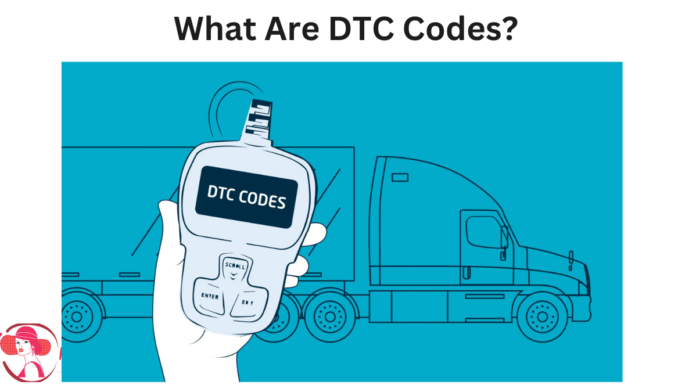Vehicle malfunctions can be frustrating, especially when you’re unsure of the issue. Thankfully, modern vehicles come equipped with a system that simplifies this process—DTC codes. Understanding what DTC codes mean and how to use them can save you time and money on repairs.
In this article, we’ll break down the concept of DTC, how to access these codes, and how they can help you diagnose your vehicle’s problems.
What Does DTC Mean?
DTC meaning stands for Diagnostic Trouble Code. These are standardized codes used by your vehicle’s onboard diagnostic system to alert you to any issues with its performance. DTC codes pinpoint specific malfunctions, allowing for quicker repairs.
Before DTC codes, diagnosing vehicle problems involved a lot of guesswork, but with the introduction of OBD-II ports (On-board Diagnostics), it has become much easier to identify and address issues.
How DTC Codes Work
When something goes wrong with your vehicle, such as a faulty fuel system or emissions control failure, the car’s system will generate a DTC code. This code corresponds to a specific problem area in the vehicle. For example, if the Check Engine Light illuminates, it could indicate an issue that needs to be addressed.
Benefits of DTC Codes:
- Speed up the diagnostic process: Know exactly what’s wrong without taking apart the engine.
- Accuracy: Pinpoints the exact area of the malfunction.
- Universal Interface: Most vehicles use the same system, so mechanics can diagnose any make or model.
How to Read DTC Codes?
Modern vehicles come equipped with an OBD system that provides access to DTC codes. You can retrieve these codes by using an OBD-II scanner or, for heavy-duty vehicles, a J1939 scanner.
Let’s break down how to read these codes.
1. Scanning OBD-II DTC Codes
- The OBD-II port is typically found under the dashboard, near the passenger compartment or steering column.
- To read the codes, you’ll need an OBD scanner, which is affordable and available for as little as $50 online.
- Plug the scanner into the OBD port, scan for codes, and retrieve the specific DTC numbers.
2. Scanning J1939 DTC Codes
For those operating heavy-duty vehicles, the J1939 port is located near the engine control module (ECM). These vehicles require a more expensive scanner since J1939 systems operate differently from OBD-II.
How to Diagnose Your Vehicle with a DTC Code?
Once you’ve retrieved the DTC code, the next step is understanding what it means. DTC codes are composed of five characters, each offering specific information about the problem area in your vehicle.
Understanding OBD-II DTC Codes:
| Position | Meaning | Example |
|---|---|---|
| First Character | Refers to the vehicle system (e.g., powertrain, body, chassis) | P for Powertrain (engine issues) |
| Second Character | Identifies whether the code is standardized (generic) or manufacturer-specific | 0 for generic, 1 for manufacturer-specific |
| Third Character | Indicates a specific system malfunction area (e.g., fuel, emissions) | 1 for fuel system issues |
| Fourth & Fifth Characters | Provide more detail about the exact problem in the system | 22 for a specific fuel issue |
By following this structure, you can diagnose the exact issue with your vehicle.
Diagnosing with J1939 DTC Codes (Heavy-Duty Vehicles)
For heavy-duty vehicles, the J1939 DTC system works slightly differently. Instead of using letters and numbers, J1939 codes use abbreviations like SPN (Suspect Parameter Number) and FMI (Failure Mode Identifier).
Components of a J1939 DTC Code:
- SPN (Suspect Parameter Number): Points to the system most likely causing the error.
- FMI (Failure Mode Identifier): Indicates the specific malfunction within the SPN.
- OC (Occurrence Counter): Tracks how many times the issue has occurred.
- CM (Conversion Method): Tells you how the codes are aligned and should be interpreted.
DTC Code Diagnosis: Step-by-Step
Here’s how you can use a DTC code to diagnose your vehicle’s problem:
- Check for warning lights: If your Check Engine light or another indicator is on, this signals a DTC code needs to be read.
- Scan for DTC codes: Use an OBD-II or J1939 scanner to retrieve the code.
- Interpret the code: Follow the structure of the code to identify the problem area.
- Fix or take action: Use the code’s insights to fix the issue or consult a mechanic if necessary.
Reducing Vehicle Downtime for Fleet Management
For businesses with delivery fleets, vehicle downtime caused by malfunctions can lead to financial losses and customer dissatisfaction. DTC codes allow fleet managers to quickly diagnose and address vehicle issues, minimizing downtime.
Tip: Utilize route optimization software like Upper to reduce wear and tear on your fleet. Proper planning of delivery routes helps your vehicles avoid unnecessary stress, extending their lifespan.
Conclusion
Understanding DTC meaning and how to use these codes is crucial for vehicle owners and fleet managers alike. Not only do they help diagnose issues quickly, but they also provide clarity on the specific malfunction affecting your car. By regularly scanning your vehicle’s DTC codes and addressing problems early, you can save money on repairs and extend your vehicle’s life.
So, the next time your check engine light comes on, don’t panic—grab an OBD-II scanner and let your DTC codes guide you toward a solution.
Click here to know more















